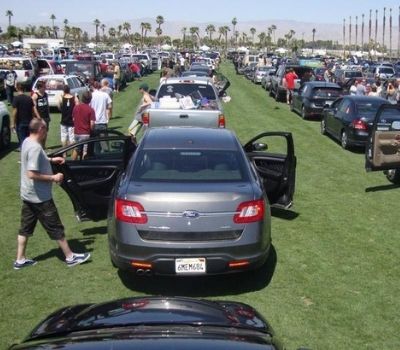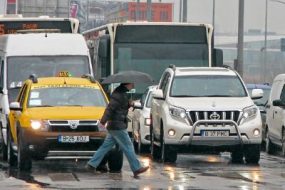
Oftentimes, in a parking lot, there can be a slow movement of vehicles or collisions because drivers are not willing to give way to other drivers or pedestrians to pass. This has led to the rule of right of way.
Who has the right of way in a parking lot? vehicles or pedestrians? The popular opinion for a parking lot right of way is that pedestrians always have the right of way but some say both drivers and pedestrians have the right of way.
This depends on whether the parking lot is a private or public property, for a private parking lot both vehicles and pedestrians have the right of way and it is up to both of them to use their discretion.
What is the Right of Way all About?
The right of way generally means a right to pass through a place usually another person’s, it could mean different things in different situations.
Right of way means you are giving precedence/priority to others over yourself when it comes to transportation and movement.
It could be a right to pass over private property or public space like on the road between vehicles and pedestrians.
For private property, the right of way may be limited to specific parameters on the property, like you are not allowed to go beyond a particular area on the property.
Right of the way allows you to pass or drive through a space that isn’t necessarily your own. In the case of vehicles where there are different intersections, a driver coming into or leaving the parking lot is expected to look both ways for oncoming vehicles or individuals and give way to avoid collision or accident.
Many states have rules guiding the right of way, and in most cases, the same rules apply to parking lots for both pedestrians and drivers.
For a public road, pedestrians that are on the marked part of the road or at any intersection are to be given precedence and allowed to cross.
When exiting a parking lot you are expected to wait and make sure there are no oncoming vehicles before backing out and in the event that there is a vehicle coming, it is up to the driver of the other vehicle to decide to give the right of way, otherwise, you wait until he/she passes.
If you are driving into a parking lot, parked vehicles backing out should watch out for incoming vehicles and should give the right of way unless the driver in the oncoming vehicles allows you to move out.
Incoming or outgoing vehicles should give pedestrians the right of way in parking lots as drivers are said to have the cover of their vehicles while pedestrians are left vulnerable.
Who Has the Right of Way in a Parking Lot?
Parking in some parking lots can be confusing as opposed to others that are easy to navigate, there are always collisions between vehicles and vehicles, vehicles and pedestrians when it comes to entering and exiting a parking lot, hence the rule of right of way.
The same rules and principles that apply on the road also apply to a parking lot. For a road, pedestrians are given precedence over vehicles, the same goes for parking lots.
Pedestrians have the right of way in a parking lot, but not always. Parking lots are considered private property therefore there are no marked crosswalks like on public roads.
Since there’s nothing to indicate that someone wants to pass, drivers are expected to be careful at all times when backing out and driving in.
Some private parking lots provide signs to ease movement between pedestrians and vehicles, but when no sign is in place, the onus falls on the driver to give the right of way.
Advantages of Following the Right of Way
The advantages of following the right of way are numerous, some of them are mentioned below
1. Free Flow of Traffic
The right of way between vehicles has ensured the free movement of vehicles. Without common sense to yield by a vehicle driver, there will be obstruction of movement, as one driver may think he is right by moving forward while the other thinks he is also right to move.
2. Reduced or no Crashes/Accident
Knowing when to yield to vehicles and pedestrians has averted a lot of crashes and accidents that could have taken place between both parties.
3. Saves a Lot of Time
Following the right of way saves both parties a lot of time that could be used in arguing over who is right and who should go first.
4. You Get to Save on Cost
When crashes or accidents happen between vehicles or pedestrians, there will always be costs incurred whether for the individual or the vehicle repairs. The cost of repairs or treatment is saved when the right of way is observed.
Disadvantages of Not Following the Right of Way
If nobody wants to yield between parties then there will be disadvantages for one or both parties. Some disadvantages are stated below:
- Crashes and Accidents: When a driver is not on the lookout for vehicles or pedestrians when backing out or driving into the parking lot there is a high chance that there will be clashes with other vehicles or a hit on a pedestrian.
- Obstruction of Movement: Not following the right of way by a vehicle will eventually lead to obstruction of movement because other vehicles won’t be able to come in or go out, and this can go on for a long time except by intervention.
- Legal Action: In the event that there is a crash or accident, the affected party may take legal actions against the other party.
Conclusion
The right of way starts with common sense, both parties using their senses to know when to yield and when to move is very important.
You don’t have to be right at all times, your decision to be the bigger person even when you are right makes all the difference.
The right of way is been followed in parking lots to reduce crashes which can occur due to drivers not knowing which way to turn to in the lot, distracted driving, or drivers driving too fast.
In the event that you are confused on whether to give the right of way or not, just yield. Yielding is a much safer option than colliding with other vehicles. Pedestrians having the right of way is not always applicable in all cases.









